GWM Tank 500 Hi4-T brings 6kW off-grid power and 3-tonne towing to PHEV market
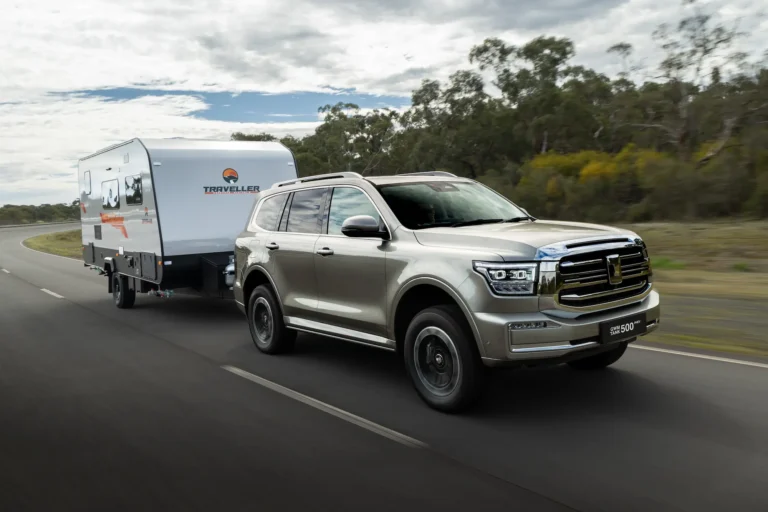



GWM’s new Tank 500 Hi4-T plug-in hybrid brings something the caravan market has been waiting for: genuine off-road capability, 3-tonne towing capacity, and 6kW of off-grid power – all wrapped in a package claiming 2.1L/100km fuel consumption.
Launching in Q4 2025 and priced from $79,990 driveaway, the Tank 500 Hi4-T represents GWM’s flagship large SUV going fully electrified while maintaining the mechanical 4WD credentials the Tank brand is known for.
For caravan owners, the question isn’t just about fuel economy – it’s whether a PHEV can actually deliver when hitched up to 2-3 tonnes on Australia’s highways and dirt roads. We won’t know until we can get our hands on a demo vehicle to find out, but for now, let’s examine what GWM is promising.
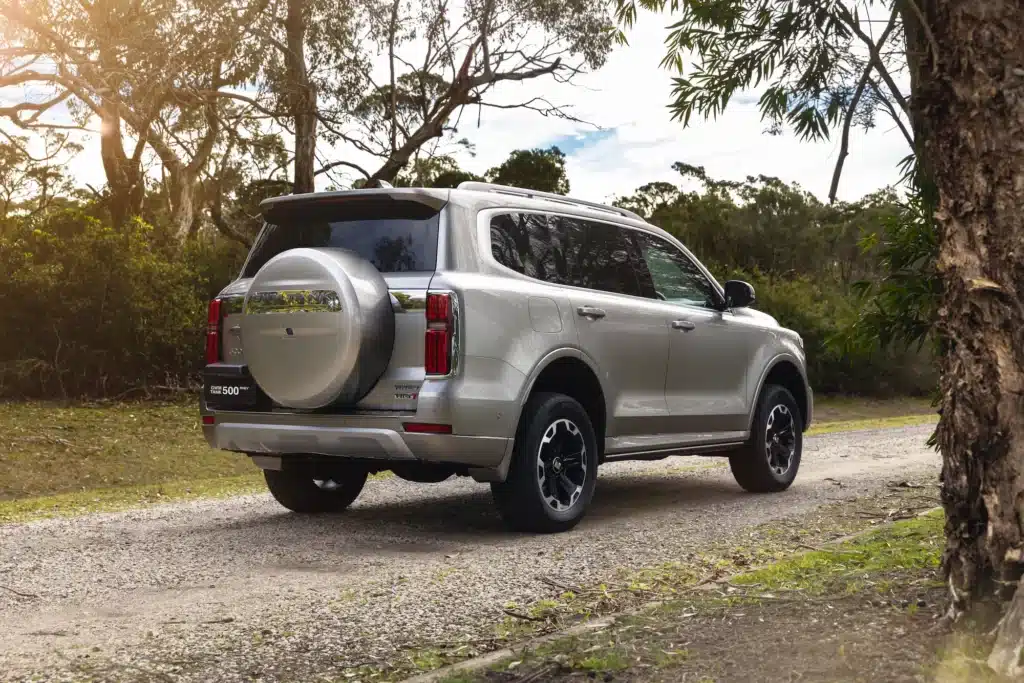
The standout feature for RV owners is the Vehicle-to-Load (V2L) capability. The Tank 500 Hi4-T can discharge up to 6kW from its 37.1kWh battery, that’s enough by GWM claims, to run a caravan’s air conditioning, fridge, microwave, and water heater simultaneously.
To put that in perspective, typical rooftop solar setups on caravans provide 400-600 watts. The Tank 500 Hi4-T essentially brings a power station to every campsite which is pretty awesome for those who want comfort without generator noise.
Assuming you would find yourself in the example situation, that’s where real-world usage enters the chat. While 6kW sounds generous, running all four appliances simultaneously would require careful power management:
Under normal operation, total draw sits around 3,200-4,500W depending on your fridge type, comfortably within the 6kW limit. The catch? That air conditioner startup surge. Without a soft-start device (around $150-300 to install), simultaneous use of all four appliances during AC startup pushes demand to roughly 6,700-8,000W – potentially exceeding the Tank 500 Hi4-T’s capacity.
With a soft-start modification, the system should handle the load. But it’s worth noting this may not be quite the “plug and play” solution GWM’s marketing might suggest and is very much device dependant.
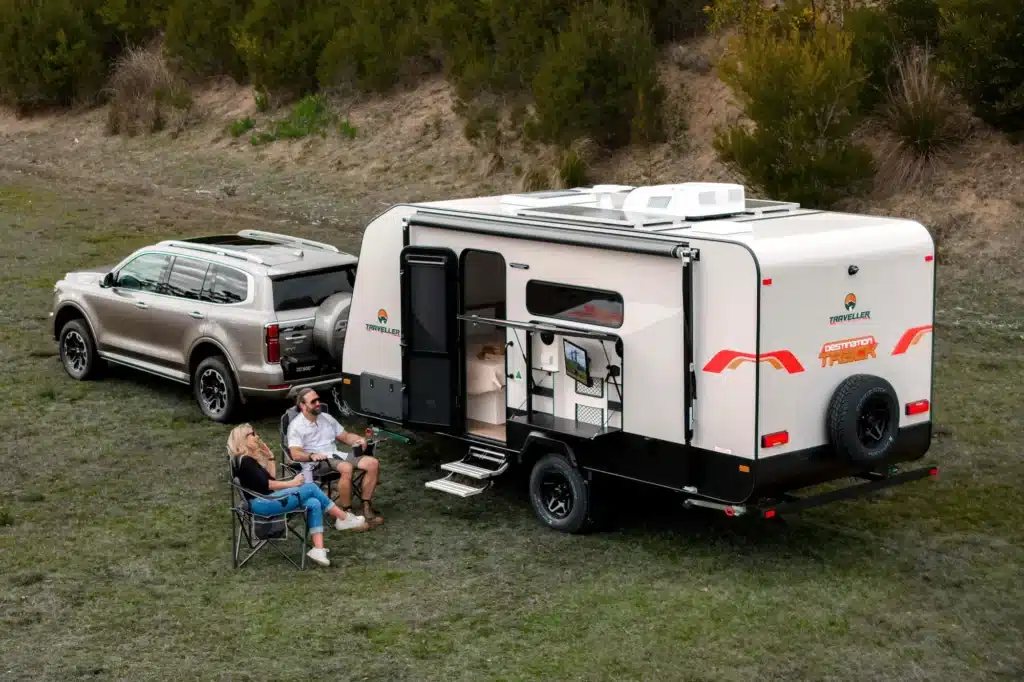
The Tank 500 Hi4-T’s powertrain combines a 2.0-litre turbocharged petrol engine with a 120kW electric motor, delivering a combined 300kW and 750Nm through a 9-speed hybrid automatic transmission. That’s decent grunt, and it maintains a 3,000kg braked towing capacity.
GWM claims 2.1L/100km combined fuel consumption and a total range of 950km. Here’s what you need to know about those figures: they’re based on NEDC (New European Driving Cycle) testing, a laboratory test cycle known for producing optimistic results.
The more realistic WLTC test cycle shows 110km electric range (versus NEDC’s 120km) and 2.3L/100km consumption (versus NEDC’s 2.1L/100km). And critically, these figures assume you’re charging regularly. Without charging, consumption could jump to around 8.8L/100km when running purely as a hybrid.
What about towing? GWM hasn’t released towing economy figures yet, which isn’t surprising – they’re typically far worse than unladen consumption. As we discovered when testing the Ford F-150 Lightning EV with a caravan, towing significantly impacts efficiency for all electrified vehicles.
Even if the Tank 500 Hi4-T delivers half its claimed efficiency while towing (a realistic expectation), it would still be competitive with diesel alternatives. But we won’t know until we hitch up a caravan and hit the road ourselves.
The 70-litre fuel tank is smaller than the standard Tank 500 hybrid’s 80 litres (the PHEV battery takes up space). With the claimed 950km combined range, you’re looking at extended touring capability, though real-world range will depend heavily on how often you can charge the battery. Run it purely on petrol at 8.8L/100km and you migh be looking at closer to 795km from a tank.
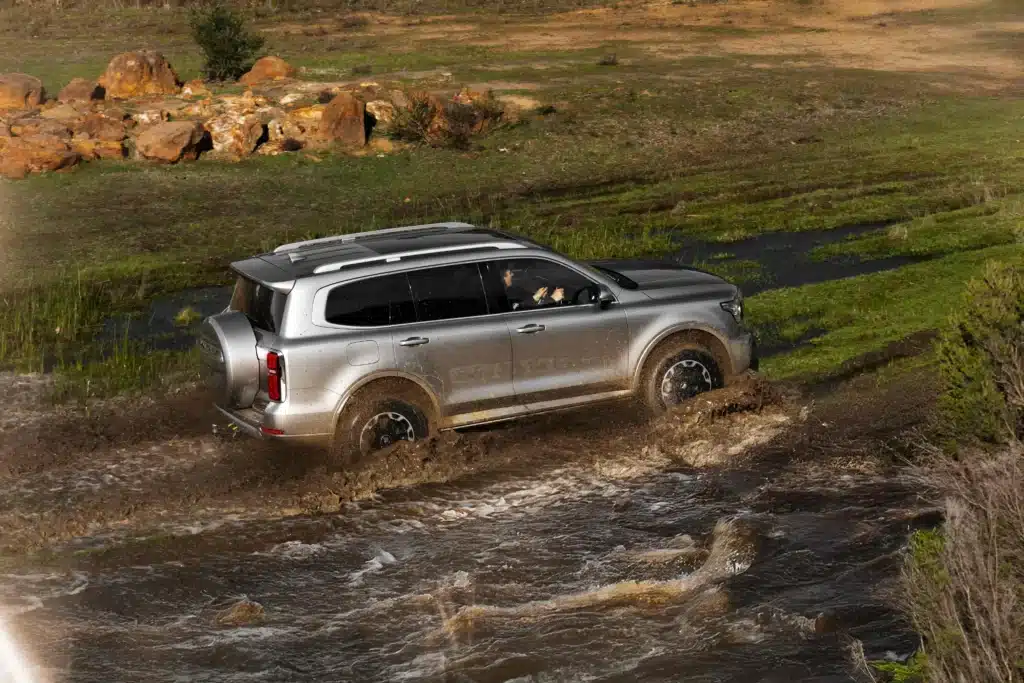
One area where we expect the Tank 500 Hi4-T to genuinely deliver is in off-road capability. Unlike some PHEVs that use electronic torque vectoring, this features proper mechanical 4WD with a torque-on-demand system, low range, and up to three mechanical differential locks (front, centre, and rear).
When you’re in a slippery situation up a hill or muddy camp site, the mechanical diff lock should make a tangible difference. The Tank 500 Hi4-T can physically lock power to individual wheels – not just rely on traction control cutting power. It’s a genuine off-roader that happens to be electrified, not an electrified vehicle pretending to go off-road.
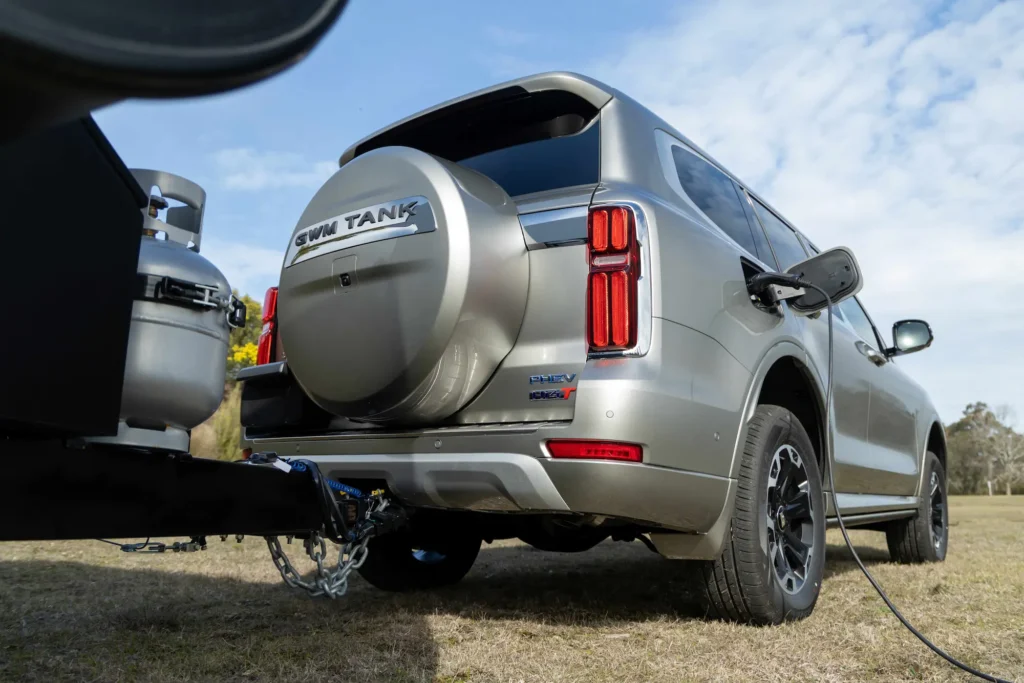
GWM’s Hi4-T (Hybrid Intelligent 4WD) is designed specifically for heavy-duty applications. Unlike the lighter Hi4 system used in models like the Haval H6, the Hi4-T features a “non-decoupling” parallel hybrid design.
In practical terms, the petrol engine and electric motor work together in real-time, with the system keeping the engine in its most efficient operating range. When you’re cruising on the highway, the system optimises for fuel economy. When you need power for overtaking or climbing a steep grade with a caravan, both the engine and motor deliver maximum torque.
The system offers multiple driving modes: 2H (rear-wheel drive), AWD (automatic all-wheel drive), 4H Lock (high-range 4WD with centre diff locked), and 4L Lock (low-range 4WD). There are also eleven terrain-specific driving modes for different conditions.
Importantly, when the battery is depleted or charging isn’t available, the Hi4-T system continues to operate as a conventional hybrid. You’re never stranded, though expect efficiency drops without regular charging.
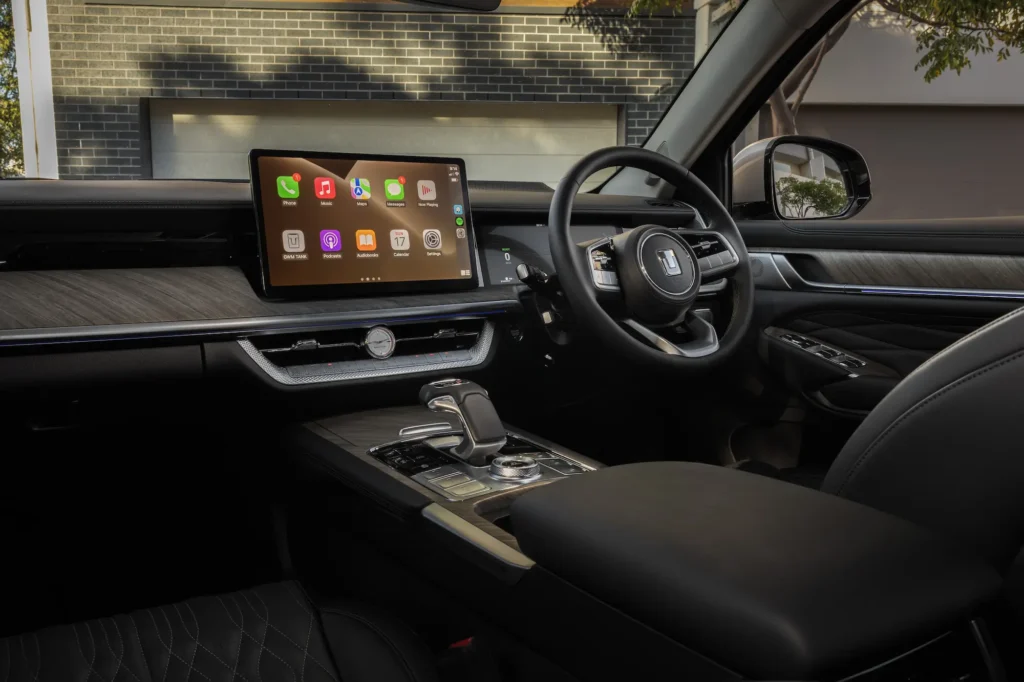
The Tank 500 Hi4-T uses a CCS2 connector and can accept up to 50kW DC fast charging, bringing the battery from 30-80% in 24 minutes. For home charging via AC, expect around 6.5 hours for a full charge.
The claimed 120km pure-electric range (NEDC) translates to roughly 110km in more realistic conditions. For daily commuting or local trips without the van, that’s enough to run on battery alone. But for caravan trips, most destinations are beyond 110km from home, meaning you’ll be using both battery and petrol from the start, exactly how the PHEV system is designed to work.
The question for touring caravanners: how often will you have access to charging infrastructure on your travels? This is really subjective depending on the type of trip you are doing, but even sleeping overnight with the vehicle on charge with a standard 10 amp is going to go a long way.
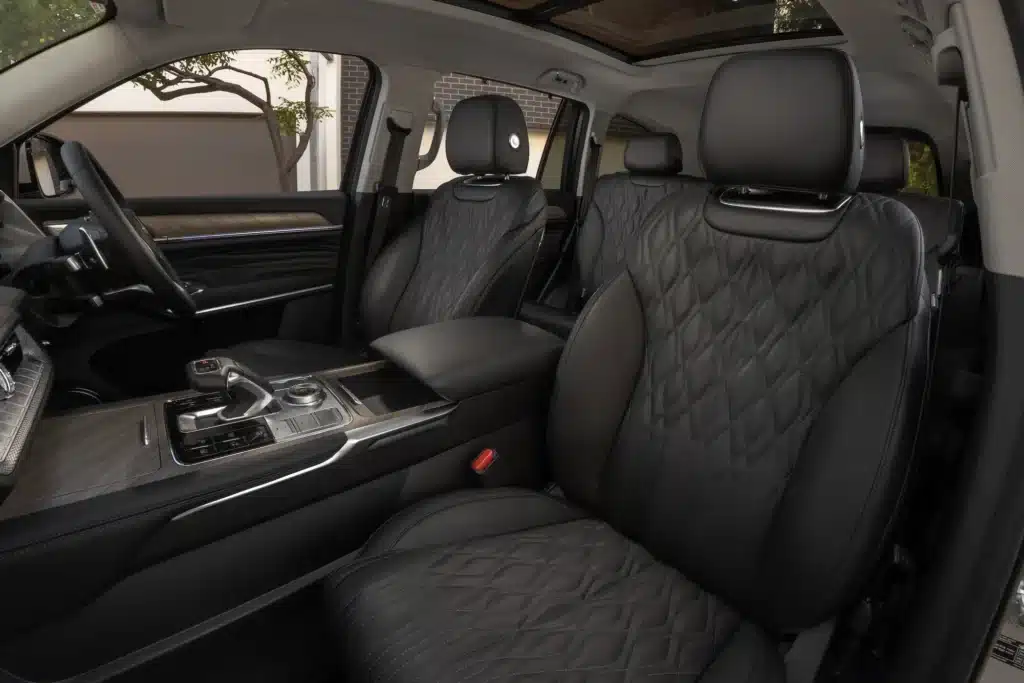
GWM has reconfigured the Tank 500 Hi4-T from seven seats to five to accommodate the larger battery pack. While that reduces passenger capacity, it significantly improves second-row comfort – the outer seats now feature heating, ventilation, and massage functions.
Rear passengers get their own 7-inch touchscreen to control the radio, climate settings, ambient lighting, and seat functions. The front cabin features a 14.6-inch colour multi-touch display with wireless Apple CarPlay and wired Android Auto, plus three-zone climate control.
Off-road specs include 213 mm ground clearance, 30-degree approach angle, 22.5-degree breakover, 24-degree departure, and an 800mm wading depth. These numbers put it in serious 4WD territory, not lifestyle SUV compromise.
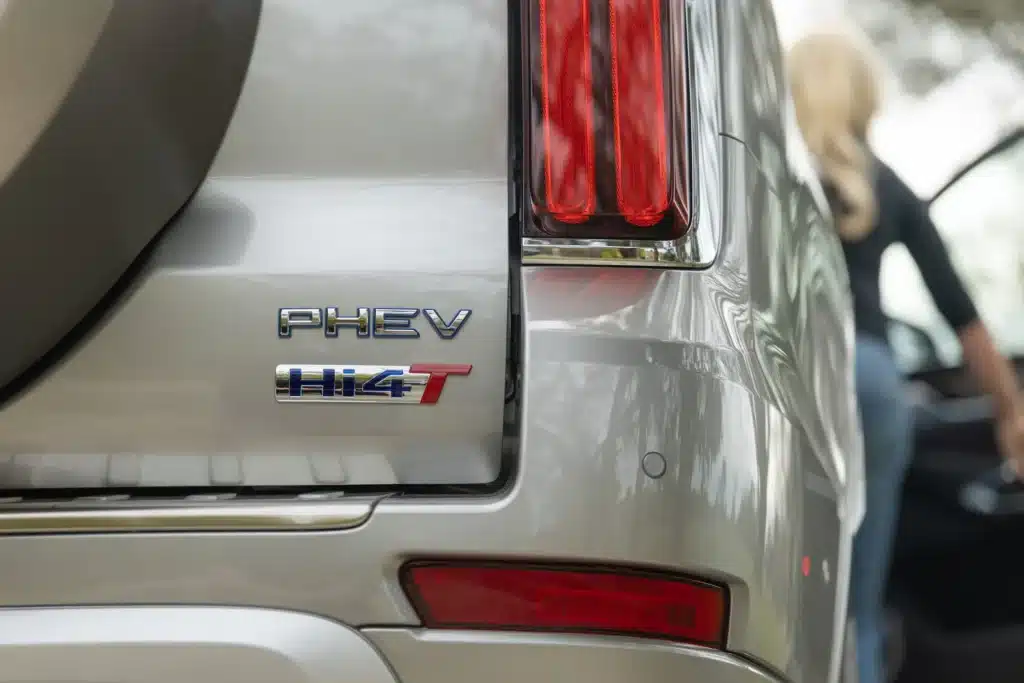
The Tank 500 Hi4-T isn’t alone in bringing PHEV technology to the towing market. JAC Motors has announced the Hunter PHEV ute will arrive in Australian showrooms in early 2026, featuring an even more powerful 385kW/1000Nm powertrain with over 100km of electric range.
This suggests the industry believes PHEV is the sweet spot for Australian conditions, combining the long-range flexibility of petrol with the efficiency and torque benefits of electric motors, without the range anxiety of pure EVs when towing.
The Tank 500 Hi4-T is backed by GWM’s comprehensive Care program: seven-year/unlimited-kilometre warranty, eight-year/unlimited-kilometre battery pack warranty, seven years of roadside assistance, and seven years of capped-price servicing. GWM’s network has expanded to 117 dealerships across Australia.
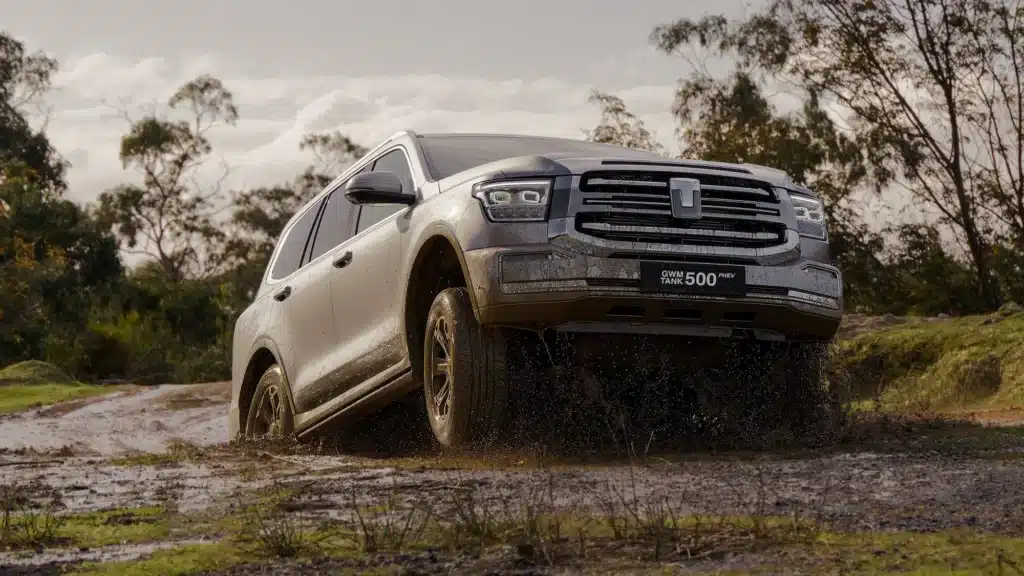
The GWM Tank 500 Hi4-T represents an intriguing proposition for caravan owners. On paper, it promises diesel-beating fuel economy while maintaining genuine off-road capability and 3-tonne towing capacity – all wrapped in a luxury package with that handy 6kW off-grid power supply.
At $79,990 driveaway, it’s competitively priced against diesel alternatives like the Toyota LandCruiser or Nissan Patrol, while offering decent technology.
But – and this is a significant but – the real-world questions remain unanswered. Will that 6kW V2L genuinely power your caravan setup without modifications? Will you achieve anywhere near 2.1L/100km while towing 2.5 tonnes? How does the vehicle perform when you can’t charge for several days? What’s the actual towing economy on Australia’s highways?
These aren’t questions GWM’s NEDC test results can answer. They require real-world testing with actual caravans on actual roads.
Over time we can expect comprehensive real-world towing economy figures, V2L power testing with typical RV appliances, and honest feedback on whether this PHEV technology delivers for Australian caravan owners.
Until then, the Tank 500 Hi4-T remains a promising concept that needs to prove itself beyond the laboratory. If it delivers even 70-80% of its claimed efficiency while towing, it could reshape the caravan towing market. But that’s a big “if” that only real-world testing will answer.
Pricing and availability: The GWM Tank 500 Hi4-T is scheduled to launch in Q4 2025 with an stated price of $79,990. Interested buyers can register their interest at the GWM website
We drove the new 2025 Toyota Prado – here’s what impressed us and what didn’t
Can the F-150 Lightning EV handle the heat? We put its towing to the test!